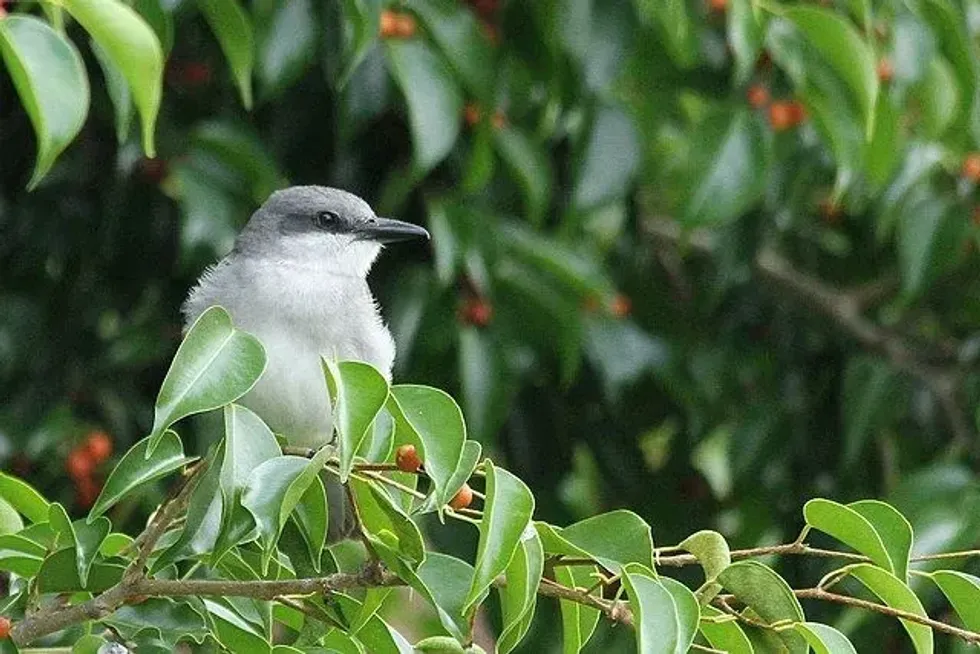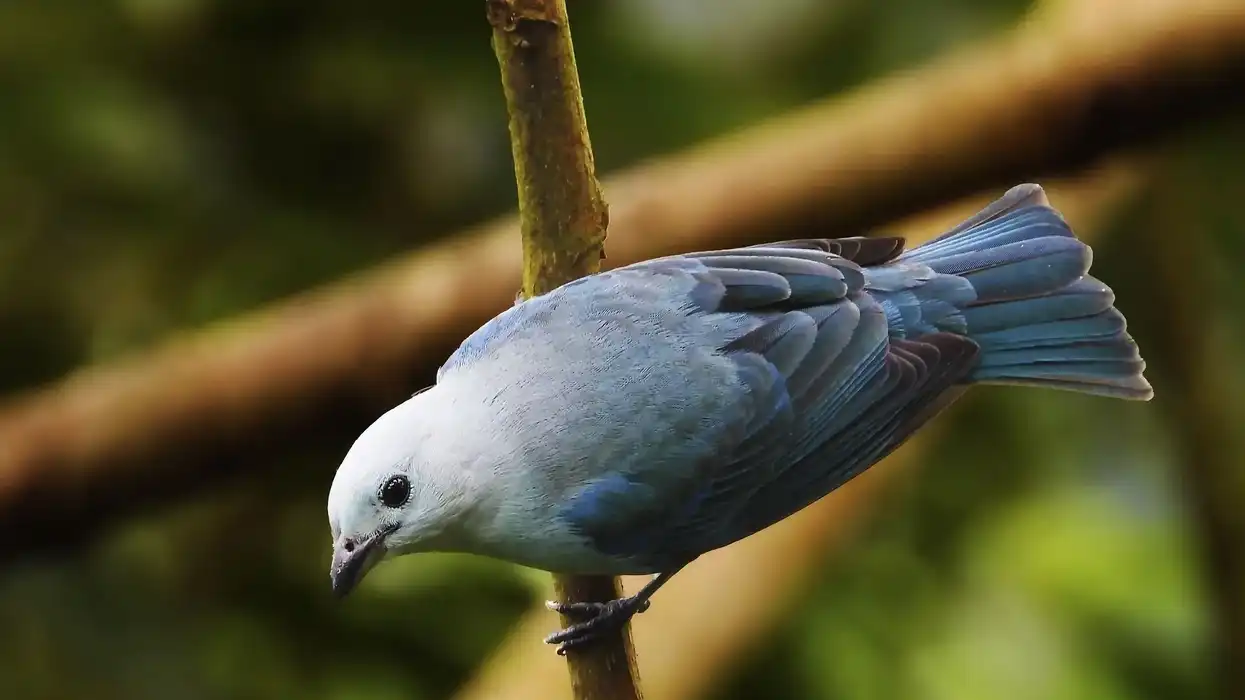If you think that birds are an interesting species and want to learn about different types of birds, then you should definitely give this article on gray kingbird a read. The gray kingbird (Tyrannus dominicensis) belongs to the order Passeriformes.
It is a member of the family Tyrannidae. This species of bird is quite widespread in its location range. It can be very easily spotted flying in areas of Florida, the West Indies, and other areas of North, South, and Central America.
The gray kingbird (Florida resident) prefers living in open areas with a lot of trees. Birds of this species have a gray and white coloration. They have a strong bill that is black in color.
They feed on a huge range of insects and other species of birds. Gray kingbirds have a lot of similarities with their cousin, the eastern kingbird.
For more relatable content, check out these varied thrush facts and song thrush facts for kids.
Gray Kingbird Interesting Facts
What type of animal is a gray kingbird?
A gray kingbird or pitirre is a type of bird. It belongs to the phylum Chordata.
What class of animal does a gray kingbird belong to?
Gray kingbird (Tyrannus dominicensis) belongs to the Aves class of Animalia kingdom. It is a member of the family Tyrannidae.
How many gray kingbirds are there in the world?
This kingbird is quite widespread in its distribution range. The exact number of this world living in this world is not known. However, the International Union for Conservation of Nature or IUCN states that the population of Tyrannus dominicensis has remained stable over the years across North and South America.
Where does a gray kingbird live?
The gray kingbird range map is quite vast. A flying gray kingbird is a very common sight in Florida. In fact, the number of these birds living in Florida increases during summer.
Apart from Florida, they are residents of other states of the southeastern United States. Puerto Rico experiences their presence in large numbers. Gray kingbirds also live in West Indies, Columbia, and Venezuela.
The Guiana in South America is home to many of these kingbirds. They exist in parts of northeast America as well. The populations that migrate spend their winter in the north of South America and the coast of Central America or the Caribbean coast.
What is a gray kingbird's habitat?
Gray kingbirds prefer living in open habitats during their breeding as well as non-breeding season. The breeding season areas, however, are farther inland. They mostly exist in areas with tall trees and shrubs.
Like a lot of species of bird, their habitat is tree-dependent. These gray birds are also found in huge numbers on the edges of savanna and marshes.
Lowland tropical zones are most preferred by them. They are found soaring at a level of 3937-9842.5 ft or 1200 to 3000 m. Even though they are found living near water bodies, they prefer dry areas during the breeding season. During the winter, the migrating birds move to a more inland area.
Who does gray kingbirds live with?
Gray kingbirds are found singly or in pairs. These kingbirds are even known to form communal groups while roosting. A breeding pair can be seen nesting together. Young gray kingbirds live with their parents until they learn to fly and defend themselves. However, gray kingbirds are intolerant of letting other species come near their nests.
How long does a gray kingbird live?
Gray kingbirds are not known to live a long life. The average life expectancy of these kingbirds is six years.
How do they reproduce?
Gray kingbirds generally start building their nest in April or May. Both birds take part in building the nest and protecting the territory. The clutch of this species consists of two oval eggs. Both parents help to incubate the eggs and take care of the young chicks.
What is their conservation status?
The International Union for Conservation of Nature or IUCN has listed Tyrannus dominicensis as Least Concern in their Red List of Threatened Species. The population trend of these birds is calculated to be stable over the years.
Moreover, a flying gray kingbird is a very common sight in its distribution range. So, it is safe to assume that the population of this kingbird is not at any immediate risk.
Gray Kingbird Fun Facts
What does gray kingbirds look like?
The gray kingbird is an average-sized bird. Birds of this species have gray upperparts and white underparts. The upperparts have blackish stripes that run throughout. They have unique crown feathers.
The crown feather is reddish-orange in color. However, the crown feathers are only visible at a very close distance. They have a sharp black bill.
When compared to similar species like the eastern kingbird, they have a stronger bill. The tail of this bird is conspicuously notched, and the coloration of the tail is black or dark gray. The tail lacks white edges. These kingbirds have dark heads and cheeks.
How cute are they?
The average size with a cute black tail makes the bird look adorable. Moreover, the crown feathers add to its beauty.
How do they communicate?
Gray kingbird uses different calls to communicate. A gray kingbird song can be heard quite often in its distribution range (West Indies, Caribbean coast, eastern North America states). It generally uses high-pitched, harsh calls. The most famous gray kingbird call is 'pitirre' or 'tee-tirree'.
How big is a gray kingbird?
Gray kingbirds are average-sized birds. They have a body that is about 9.1 in (23 cm) long. The size of the wingspan is somewhere between 14.5 - 16 in (37 - 41 cm).
The body size of this kingbird is similar to that of its cousin, the eastern kingbird. When compared to other birds, a gray kingbird is almost twice smaller than an average red-tailed hawk. However, they are noticeably bigger than a regular seaside sparrow.
How fast can a gray kingbird fly?
Just like an eastern kingbird, the gray kingbird is agile flyers. They can cover great distances quite fast. In fact, the reason for this bird being a great flycatcher is its speed. However, the exact speed of a gray kingbird is not known.
How much does a gray kingbird weigh?
The average weight of a gray kingbird is somewhere between 1.3-1.8 oz (37-52 g). If we compare an average gray kingbird with a regular house sparrow, gray kingbirds weigh significantly more. However, they weigh almost the same as their cousins, the eastern kingbird.
What are the male and female names of the species?
A male gray kingbird is called a cock, and a female gray kingbird is called a hen.
What would you call a baby gray kingbird?
Just like babies of other birds, baby gray kingbirds are referred to as chicks.
What do they eat?
Tyrannus dominicensis, or the gray kingbird, is an extremely skilled flycatcher. A huge part of its diet consists of insects. It can prey on insects of various sizes.
A variety of beetles and wasps fall prey to this skilled flycatcher. Its speed and capability to prey mid-air give the bird huge advantages while preying.
Other insects like dragonflies and grasshoppers are also a part of its diet. To add to that, the gray kingbird is known to feed on lizards. The Caribbean population of this average-sized bird is noticed to hunt down hummingbirds and feed on them.
A portion of the gray kingbird diet consists of berries and some other small fruits. This flycatcher is also known to consume a variety of seeds at times.
Are they dangerous?
The gray kingbird, living in South, Central, and North America, shows agonistic behavior during breeding. They aggressively chase away intruders from their territory, just like the eastern kingbird.
Cases of a gray kingbird chasing away mammals and other animals are quite common in the Caribbean coast and other places they live in. This kingbird is even not scared to show this behavior to birds that are bigger than it them. Hawks and caracaras are quite fearlessly chased by them.
The long bill of the bird comes in handy in portraying such behavior. So, the right term to describe the behavior of this bird would be aggressive and not dangerous.
Would they make a good pet?
The gray kingbird can be kept as pets in North America. However, it requires a great deal of care and attention. You can buy a gray kingbird online or from trade markets in North America like the eastern kingbird.
Did you know...
Gray kingbird has a couple of other names. Among them, petchary and pitirre are the most common. It is also referred to as a white-breasted kingbird because of the presence of white underparts.
Where do gray kingbirds nest?
Pitirre or gray kingbird makes build cup nests on the branches of trees. While nesting, they prefer an open dry habitat. Both males and females take part in the nesting process.
Why does gray kingbirds fly into windows?
The gray kingbirds are quite aggressive when it comes to defending their territories. A lot of times, it sees its own reflection in the window and considers the reflection a rival. So, they fly into the windows to protect their territory.
Here at Kidadl, we have carefully created lots of interesting family-friendly animal facts for everyone to discover! For more relatable content, check out these belted kingfisher facts and common kingfisher facts pages.
You can even occupy yourself at home by coloring in one of our free printable Gray kingbird coloring pages.









